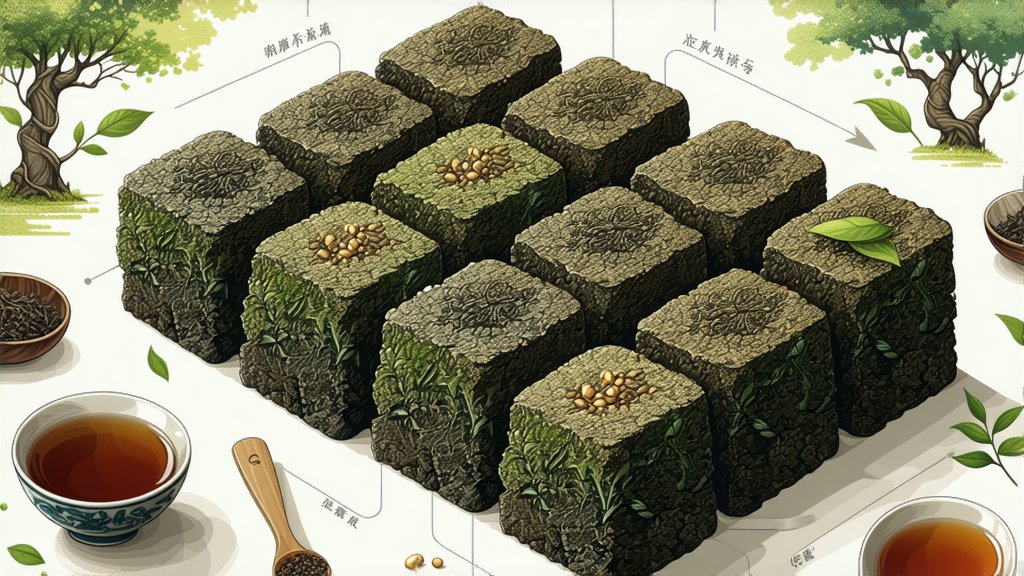
Pu-erh tea, a gem nestled within the vast expanse of China's dark tea category, has captivated tea enthusiasts worldwide with its unique aging process, complex flavors, and numerous health benefits. Originating from the ancient tea-growing regions of Yunnan Province, this tea boasts a history that intertwines with the cultural fabric of China, dating back centuries.
A Glimpse into History
The story of Pu-erh begins in the misty mountains of Yunnan, where legend has it that the tea was named after the market town of Pu'er (now known as Simao). Historical records trace its cultivation back to at least the Tang Dynasty (618-907 AD), but it truly flourished during the Ming (1368-1644) and Qing (1644-1912) dynasties when it became a crucial part of the trade along the Ancient Tea Horse Road, connecting Yunnan with Tibet and other regions.
Varieties and Characteristics
Pu-erh tea is primarily categorized into two types based on processing methods: Raw Pu-erh (Sheng) and Ripe Pu-erh (Shou). Sheng Pu-erh undergoes natural fermentation over time, allowing its flavors to mature gradually, while Shou Pu-erh undergoes a post-fermentation process called "wet piling," accelerating the aging process through controlled humidity and temperature conditions.
Each variety offers distinct characteristics. Sheng Pu-erh is prized for its fresh, vibrant taste with hints of orchid and fruity undertones, which mellow into deeper, earthier flavors as it ages. On the other hand, Shou Pu-erh presents a more mellow and smooth profile right from the start, often featuring notes of wood, earth, and sometimes a hint of sweetness due to the fermentation process.
Craftsmanship: From Leaf to Cup
The journey of Pu-erh tea from leaf to cup is an art form in itself. It all starts with the careful selection of large-leafed Camellia sinensis var. assamica plants, native to Yunnan. These leaves are then picked, typically by hand, and sorted according to their maturity and quality.
For Sheng Pu-erh, the leaves are sun-dried or pan-fried to remove moisture before being rolled into cakes, bricks, or other shapes. They are then stored in a ventilated environment where they slowly oxidize and ferment over years, sometimes even decades, developing their unique character.
Shou Pu-erh, however, undergoes a more involved process. After initial drying, the leaves are piled up in large stacks and sprayed with water to encourage microbial activity. This "wet piling" process lasts several weeks to months, during which the tea is turned regularly to ensure even fermentation. Once completed, the tea is pressed into shapes and left to further age.
Appreciating Pu-erh Tea
To truly appreciate Pu-erh tea, one must engage in a ritualistic preparation and tasting experience. Begin by selecting a high-quality tea cake or brick, preferably aged for optimal flavor development. Use a pu-erh needle or a small knife to gently break off a portion of the tea, avoiding crushing the leaves too finely.
Next, rinse the tea briefly with hot water to awaken its flavors and remove any surface impurities. Then, steep the leaves in boiling water for about 5-10 seconds for the first infusion, gradually increasing the steeping time for subsequent brews. Pu-erh can be steeped multiple times, each infusion revealing new layers of complexity.
When savoring Pu-erh, pay attention to its aroma, which evolves throughout the session—starting with a vegetal freshness and progressing to deeper, earthier tones. Taste the tea slowly, allowing it to coat your palate fully before swallowing, noting the balance between bitterness, astringency, and sweetness. The aftertaste should be long-lasting and pleasant.
Health Benefits and Cultural Significance
Beyond its exquisite taste, Pu-erh tea is renowned for its potential health benefits. Studies suggest that regular consumption may aid in weight loss, digestion improvement, blood sugar regulation, and even possess anti-aging properties due to its high content of antioxidants.
In Chinese culture, sharing a pot of Pu-erh symbolizes friendship and respect. It is often served during important gatherings, ceremonies, embodying the philosophy of harmony and balance inherent in traditional Chinese medicine and philosophy.
In conclusion, Pu-erh tea stands as a testament to China's rich tea heritage, offering not just a beverage but an experience that transcends time and borders. Its intricate production processes, diverse varieties, and profound cultural significance make it a fascinating subject for exploration by tea connoisseurs and casual drinkers alike. Whether you're drawn to its historical depth, seeking healthful indulgence, or simply yearning for a moment of tranquility, Pu-erh invites you on a journey of discovery that celebrates the art of tea making and appreciation.